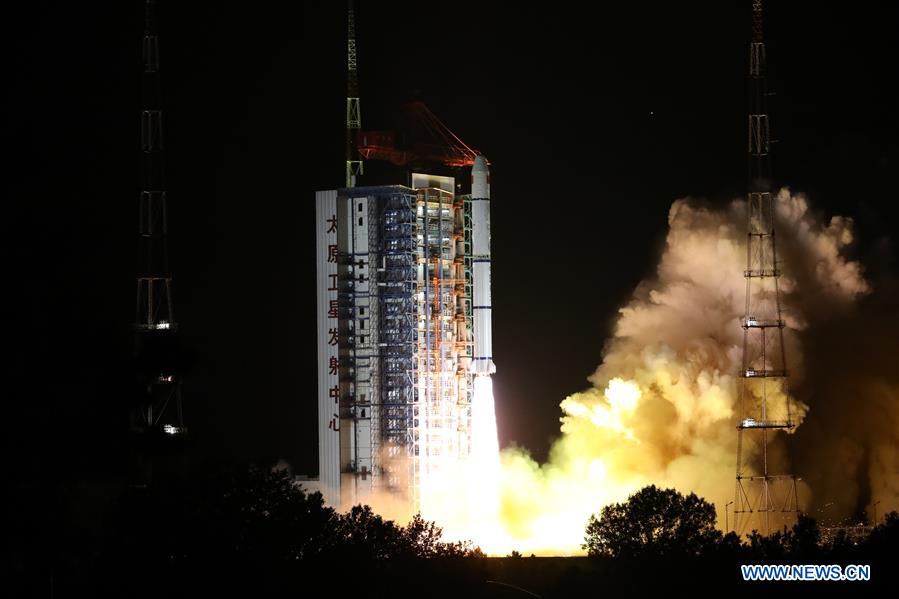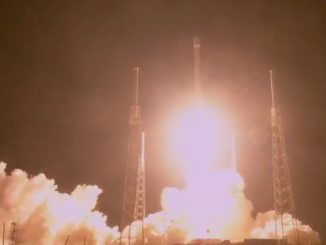
A civilian-operated Chinese oceanography satellite deployed in orbit after lifting off on a Long March 2C rocket Wednesday, joining a predecessor launched in 2018 to monitor ocean color and water temperatures.
Chinese engineers also debuted modifications to the Long March 2C’s payload fairing to help the structure keep its shape during the fall to Earth, the latest in a series of experiments that could help lead to the recovery and reuse of future Chinese rockets.
The Long March 2C rocket lifted off with the Haiyang 1D oceanography satellite at 1831 GMT (2:31 p.m. EDT) Wednesday from the Taiyuan space center in northern China’s Shanxi province.
Liftoff occurred at 2:31 a.m. Thursday, Beijing time.
Powered by hydrazine-fueled engines, the two-stage launcher climbed away from Taiyuan with more than 600,000 pounds of thrust, arcing toward the south to deliver the Haiyang 1D spacecraft to a polar orbit inclined 98.4 degrees to the equator.
U.S. military tracking date indicated the satellite deployed into an orbit around 480 miles (775 kilometers) above Earth, very close to the prelaunch target. Chinese officials declared the launch a success.
The China Academy of Launch Vehicle Technology, or CALT, said engineers introduced changes to the Long March 2C’s payload fairing for this launch. CALT is China’s primary state-owned launch vehicle manufacturer.
After jettisoning from the launcher a few minutes after liftoff, the payload shroud on Chinese rockets typically falls back to the ground uncontrolled. Built with lightweight thin walls to reduce the mass, the two-piece payload fairing can lose its shape during descent.
Chinese officials added an X-shaped beam to reinforce the fairing structure to help the nose cone avoid damage during the fall back to Earth. Engineers also installed an optical fiber sensor on the fairing to measure strain, stress and other parameters during the fairing’s descent back through the atmosphere, according to CALT.
The data will help inform future upgrades to the fairing, officials said.
Launches from most Chinese spaceports, including Taiyuan, drop booster stages and payload fairings on land, rather than over the ocean.
The Chinese launch vehicle manufacturer did not say the changes to the fairing were conceived to aid the recovery and possible reuse of future payload shrouds, but the fairing modification comes after the introduction of aerodynamic grid fins on a Long March 2C rocket launch last year.
At that time, Chinese officials said the grid fins — resembling the winglet fins on SpaceX’s reusable Falcon 9 rocket boosters — were designed to help guide falling Long March stages away from populated areas as they fall back to Earth.
But Chinese companies have said they are studying reusable rocket technology.
The Haiyang 1D satellite carries five instrument payloads.
The satellite will observe ocean color, a measurement that helps scientists track pollution and natural ocean constituents such as chlorophyll. Haiyang 1D will also measure sea surface temperatures, image coastal waters, and detect identification signals from ships. The measurements will be used by weather forecasters, farming operations, and water conservation, transportation and environmental protection authorities, according to China’s government-run Xinhua news agency.
China operates two families of Haiyang satellites — the Haiyang 1-series and Haiyang 2-series — that carry different sets of oceanography instruments. The previous member of the Haiyang 1 family, Haiyang 1C, launched in September 2018 with a similar instrument suite as Haiyang 1D.
Haiyang 1D, the fourth spacecraft in the Haiyang 1-series, will operate in tandem with Haiyang 1C, Chinese officials said. The spacecraft was was built by DFH Satellite Co. Ltd.
The instruments aboard the Haiyang 2B spacecraft, which launched in October 2018, include a radar altimeter to measure ocean topography, a microwave radiometer to map sea surface temperatures, and a scatterometer to collect wind data over the oceans.
The Haiyang satellite series is named for the Chinese word for “ocean.”
Email the author.
Follow Stephen Clark on Twitter: @StephenClark1.



